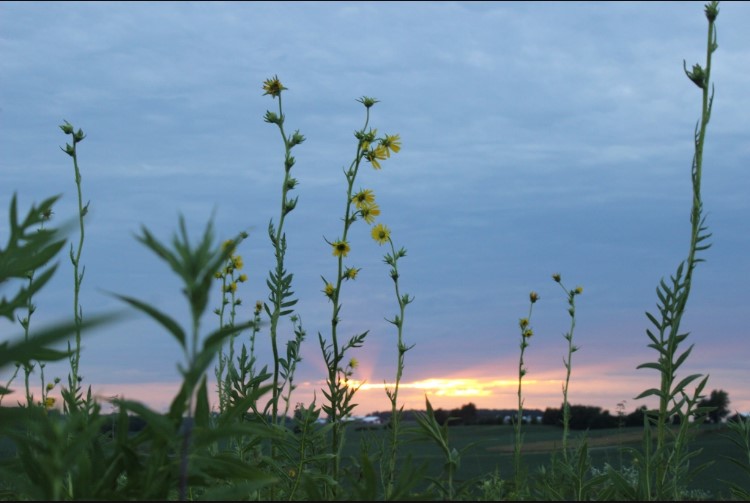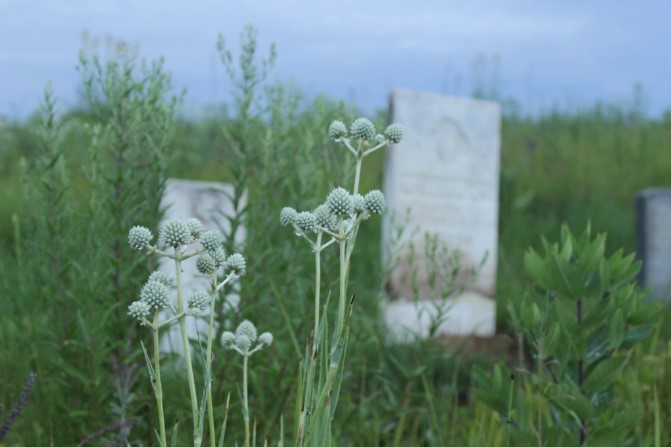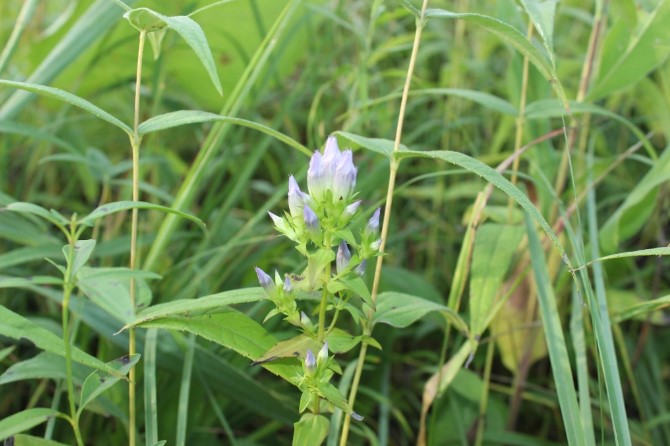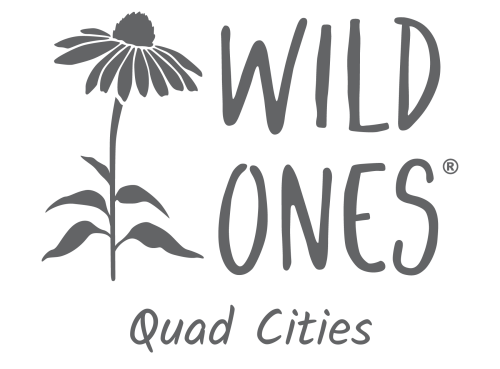written by Grant Fessler, originally posted on his website, gcology.net

Perhaps nothing embodies Midwestern summer better than a July thunderstorm. There is something magical and humbling about watching enormous, rain-heavy clouds unleash their tumult and violence over the low, rolling hills and river valleys. To hear the distant booms and crashes of thunder gradually approach until it is directly overhead. To see sudden flashes of lightning and to feel the powerful gusts of wind that bring the rain down in sheets and chill the hot, humid air. And finally, once the storm has passed, to marvel at the towering clouds illuminated by the setting sun reflecting almost indescribable shades of deep purple and blue, vibrant orange and yellow. What a show for the senses so infrequently rivaled!
For millennia, these storms have occurred in this part of the continent when prevailing westerly winds sweeping off of the Rocky Mountains collide with warm, moist Gulf air as it surges northward. The waters of these tempests once fell on the deep-rooted prairies, marshes, and woodlands which ever so slowly trickled this earthly lifeblood into streams, which fed to shallow rivers, and which emptied into the Atlantic Ocean.
Today, our Midwestern landscape looks and behaves quite different. Its original ecological character has been largely erased, or, in the very least, it has been highly altered. Fields of annual corn and soybeans dominate where perennial prairie and savanna once did. The wetlands have, in large part, been drained, and the meandering network of streams have been straightened, channelized, and down-cut by erosion. Water now falls on an incredible amount of bare soil, shallow-rooted vegetation, and pavement. As it drains into the ocean, more quickly that it has in thousands of years, it takes with it what remains of the legacy of the tallgrass prairie: rich, black soil.

With landscape-scale prairie essentially gone from most of the Midwest, our summer thunderstorms now lack a unique aspect. Have you ever seen the tall, arching stems of Big Bluestem sway and dance with the yellow-flowered stalks of Compass Plant during a summer gale? What does it look like when the orange flowers of Butterfly Weed are overtopped by brooding purple skies? What does it sound like when the wind whips through the spreading crown of a savanna-grown Burr Oak? What does it feel like to walk through the sopping wet stems and leaves of tallgrass prairie after the storm has passed and to listen as the birds begin to sing once more? These experiences, once a regular part of life on the prairie, are now exceedingly rare.
We are lucky to have a few places, such as nature preserves and restorations, where these questions can still be answered. For those of us living in the Quad Cities region, one such place is Munson Township Cemetery Prairie Nature Preserve. Located in the gently rolling prairie plains of Henry County, this 5-acre parcel contains some of the last virgin black soil prairie in this corner of Illinois. In addition, it is one of the westernmost remaining pieces of the original Grand Prairie that once stretched for hundreds of square miles across northern and central Illinois (see map below). The preserve comprises a small ridge with east and west facing slopes, surrounded by a vast sea of corn and soybeans. The establishment of a pioneer cemetery during the 1800s is the primary reason that prairie vegetation persisted all these years. Its more recent health, however, can be attributed to the stewardship efforts of the Henry County Natural Area Guardians.

This old-growth grassland allows us a glimpse at the original character of Illinois. Spring showers bring out the eye-catching blooms of Shooting Star (Dodecatheon meadia), Yellow Star Grass (Hypoxis hirstua), and sedges (Carex spp.) which are followed by the liquifying magenta flowers of Spiderwort (Tradescantia ohiensis), New Jersey Tea (Ceanothus americanus), and Pale Purple Coneflower (Echinacea pallida) in early to mid-summer. Next, Purple Prairie Clover (Dalea purpurea) and Leadplant (Amorpha canescens), two members of the pea family, add purples and indigos to the prairie, their flowers a favorite of pollinators. Once summer is in full swing, the yellows of Compass Plant (Silphium laciniatum), Grey-headed Coneflower (Ratibida pinnata), and Sunflowers (Helianthus spp.) arrive to brighten the scene.

July sun.
During summer, our native prairie grasses such as Big Bluestem (Andropogon gerardii), Little Bluestem (Schizachyrium scoparium), and Indian Grass (Sorghastrum nutans) grow rapidly. At Munson, the green blades and stems gradually swallow the tombstones with each passing day.

Other summer-blooming residents at Munson include Illinois Tick-trefoil (Desmodium illinoense), Prairie Coreopsis (Coreopsis palmata), Virginia Mountain Mint (Pycnanthemum virginianum), and Rattlesnake Master (Eryngium yuccafolium). The latter of these produces unique, spiky flower heads atop leaves reminiscent of our southwestern Yucca (see above photo).
Late summer and early fall at Munson are colored by more purples, blues, and yellows. The blooms of Stiff Goldenrod (Solidago ridgia), Western Agueweed (Gentianella quinquefolia occidentalis), Prairie Blazingstar (Liatris pycnostachya), and Sky Blue Aster (Symphyotrichum oolentangiense) mark the finale of the tallgrass performance.

On this western Illinois ridge, rain continues to water the prairie as it has for thousands of years, and the ancient rhythms of this natural community continue to play out, albeit at a small scale. We are gifted with the opportunity to know what it is like to stand amongst tall grasses and wildflowers after a summer thunderstorm and listen to the insect and bird songs as the sun drops below the horizon. This piece of prairie gifts us with the opportunity to more intimately know this part of the earth and our relationship to it.
If you are interested in exploring this special place with fellow native plant enthusiasts, the Quad Cities Chapter of the Illinois Native Plant Society will be visiting it on July 29th, 2023 from 10am to noon! Meet at the prairie: https://goo.gl/maps/t4Fg7byvh7Sg7MSS7. Feel free to reach out to [email protected] with any questions.
For more resources and stories on the flora of the Quad Cities Region, visit Grant’s website gcology.net
